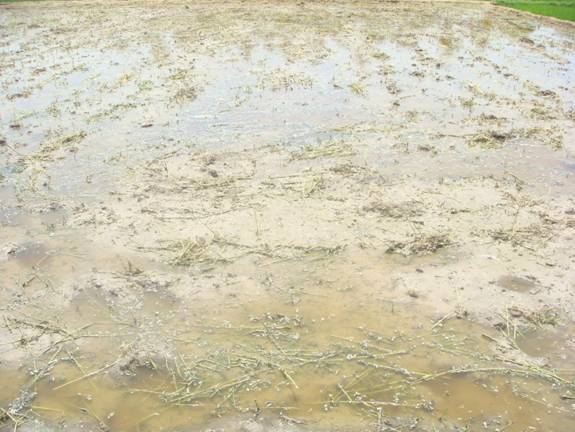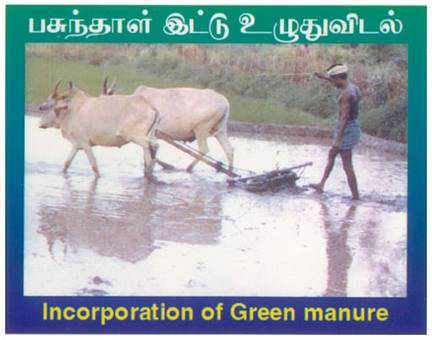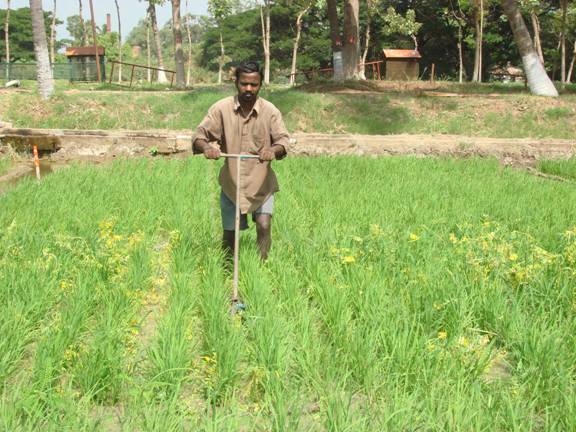
|
|||||||||||||||||||||||||||||||
| Home | Seasons & Varieties | Tillage | Nutrient Mgmnt | Irrigation Mgmnt | Weed Mgmnt | Crop Protection | Cost of Cultivation | Photobank | |||||||||||||||||||||||||||||||
Major Areas :: Green Manuring :: An Introduction |
|||||||||||||||||||||||||||||||
GREEN MANURING India has changed from a region of food scarcity to food sufficiency by increased fertilizer use with subsidized prices, but use of organic manures including green manure, declined substantially. Inorganic fertilizers are becoming more expensive, therefore sustainability of soil productivity has become a question. Hence, alternate sources to supplement inorganic fertilizers are thought. Green manuring are low cost and effective technology in minimising cost of fertilizers and safeguarding productivity. Green manure crops 
Green manure incorporated field Green Manuring
Green leaf manuring
Objectives of green manuring Subsidiary objective b. Shade crops c. Cover crops d. Forage crops Classification of green manures
Characteristics desirable in legume green manure crops
Leguminous green manures Local name Sesbania Common shrubs and trees used as green leaf manures
Non-conventional green manures
Forms of green manuring
|
|||||||||||||||||||||||||||||||
| Home | Seasons & Varieties | Tillage | Nutrient Management | Irrigation Management | Weed Management | Crop Protection | Cost of Cultivation | Disclaimer
© All Rights Reserved. TNAU-2016. |
|||||||||||||||||||||||||||||||

